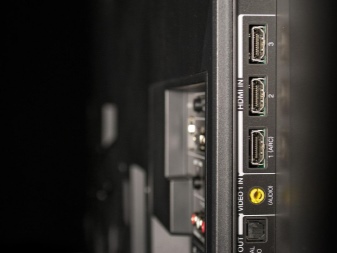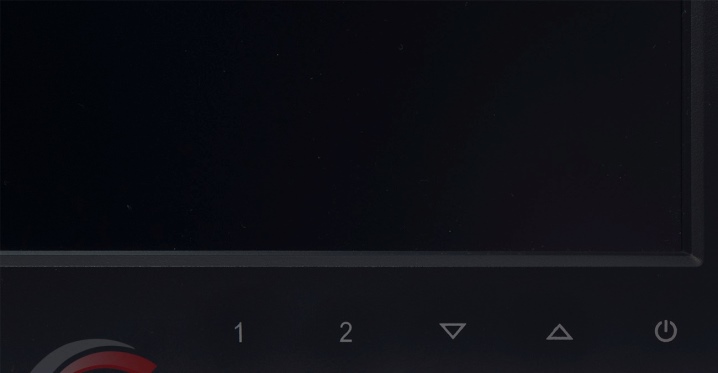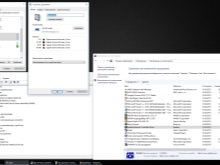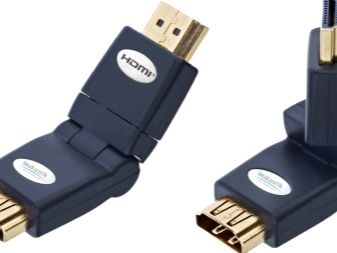Why is there no sound on the TV when connected via HDMI cable and how to fix it?

In recent years, the TV has long ceased to fulfill exclusively its direct purpose. Today, new models of these devices are also monitors, but with a significantly larger diagonal than models that are made specifically for computers. For this reason, these days, very often computers, tablets and other equipment are connected via the HDMI connector and the corresponding cable to the TV, which allows you to output the image and sound to it. But it so happens that there is either no sound at all when connected, or it disappears over time. Let's try to figure out why this happens and how to fix it.

Possible reasons
First, let's try to figure out why the sound disappeared or why it just isn't transmitted through the specified type of cord. So, the first reason why the sound does not go to the TV may be hidden in the fact that mute mode is activated on the TV using the Mute key... Alternatively, the volume level can be set to the very minimum. The problem is often solved very simply. By the way, it will not be superfluous to see how many HDMI ports the TV has.


If it is not alone, then you can connect the wire to another connector of this type.
Another reason is feeding sound to a completely different device.... This problem is typical for computers that are running the Windows operating system. So, this operating system has one property - when making changes to some settings, installing updates, connecting equipment and other actions, the device to which sound is supplied may be incorrectly selected. That is, if the computer has several devices that can play sound, then the operating system can choose the wrong device as the "correct" one. That is, it may turn out that the sound is in the PC speakers, but it is not possible to output it to the TV.

The third common problem that causes the TV to not play sound when connected via HDMI is the most common lack of the necessary video card driver. More precisely, we are talking about the component that is responsible for the sound output through the HDMI connector. Or it can be installed, but not updated to the newest version, which is why it does not work correctly. At the same time, it often happens that the user seems to have installed the required driver, but did not check the box on the necessary component during installation, which is why the driver was installed simply without it.

Another fairly common problem is that you just need to set up the sound in the control center directly by the driver, which is responsible for the sound output to the TV... The fact is that often drivers of this type contain their own control centers, where there are various settings for use with connected audio and video equipment.

Well, it also happens that users simply confuse HDMI with others and connect via VGA or DVI... These types of cables do not allow the transmission of sound to the TV, which easily explains that it does not reproduce it.Or the connection can be made via HDMI, but using adapters of the specified standards, which also do not transmit sound. It happens that the cable is simply not detected. The reason it doesn't work is likely to be physical damage.


Checking the volume levels on the TV and computer
Now let's try to figure out how to check the levels and adjust the desired volume levels or even turn on the sound if it is turned off.... First, let's do it on a computer. To do this, open the panel with volume levels. You can do this by clicking on the speaker icon to the left of the date and time on the right side of the Taskbar. If the sound is at a minimum, you need to increase the volume using the slider to a comfortable level.
Now you should click on the sound icon with the right button and select "Volume Mixer".

A new window will appear where you can turn on the desired volume level for the TV and the running program. If you are using not a personal computer, but a laptop, then there you can also increase the volume in hardware. To do this, you need to hold down the Fn key with one of the keyboard buttons, which shows the loudspeaker icon. They are different for different manufacturers. A window with a level will open in the upper left part of the display, which can be switched higher by pressing the specified key combination once.

Besides, check the sound on the TV... To do this, you can turn on any channel and press the volume up button on the remote control. Make sure the TV is not in some kind of silent mode. If the audio stream is present, then the device is working properly. If not, then you should contact the repairman. If, for some reason, the remote control is not at hand, then you can use the volume up buttons on the back or front of the TV, depending on the model.

Selecting the correct playback device
As described above, it happens that the reason for the lack of sound when the computer is HDMI-connected to the TV is the incorrect selection of the playback source by the computer... As already mentioned, the Windows operating system performs the detection of the playback device on its own after connection. And the automatic selection is not always correct, for which reason it has to be reconfigured manually. To select the correct playback device manually, you need to do the following:
- to quickly open the "playback devices" window, move the mouse over the volume icon and right-click on it - you can see several items, you should find "playback devices" by clicking on them with the left mouse button;
- now you should find the item with the name of the TV;
- you need to click on the "Use as default" button;
- waiting for "Apply" to save your choice.

If you do not see the item with the name of the TV, then you should click on an empty space with the right mouse button, where you will need to find the item "Show disabled devices". If there is a TV among them, then you need to find it and follow the above steps. Note that this tuning algorithm is suitable for both Windows 7, 8, and 10.



Installing Drivers
As mentioned above, driver problems can be another cause of the problem, which is covered in this article. First, you need to understand how to generally establish the fact that the problem lies precisely in the drivers.
Problems with them will be indicated by exclamation or question marks next to the device icons in the device manager.

If there is a question mark, it means that the driver is not installed at all, and if there is an exclamation mark, it means that there is a driver, but it does not work correctly. For example, it can be damaged by viruses.In addition, an exclamation mark may indicate the need to update the driver. In any case, if you have problems with the drivers, you should proceed to installing them. Let's try to consider how to do this on Windows 7 and Windows 10.

For Windows 7
So, if you need to download and install drivers on Windows 7, then you should do the following:
- first, you should go to the official website of the video card manufacturer;
- after that, in the appropriate forms, you should select the type, series and family of the device in the appropriate menu;
- now in a new window it will be necessary to indicate which operating system is on the computer, as well as in which language the installer should be;
- after that, a link to the latest driver package for your video card will appear on the site, which will need to be downloaded by pressing the corresponding key on the screen;
- after the driver is loaded, you need to enter the "Downloads" folder, where you will need to run the installer;
- now you need to select the necessary driver components that you want to install, and then click on the appropriate button, you will need to check the box next to the item "HD Audio Driver", because it is he who is responsible for transmitting sound via HDMI;
- now it remains to wait until the installation is complete;
- we reboot the personal computer and see if the problem is solved.


For Windows 10
In Windows 10, the installation algorithm will be almost identical, with the exception of a few moments, because of which it makes no sense to repeat it again. But here it is necessary to note a number of nuances that can confuse the user. The first is that Windows 10 has a system that automatically downloads or installs the most appropriate drivers immediately after the computer connects to the Internet after installing it. Because of this, a problem often occurs in which the system does not show any problems with the driver, but it is not fully installed. That is, the driver itself will be installed, but the manufacturer's interface will not.
Because of this, competent management of the driver or its settings is impossible.
Another aspect concerns the fact that it often happens that when a system is asked to update drivers, it will claim that the installed driver is the last one. But you can go to the website of the official manufacturer and make sure that this is not the case. So We advise you to download drivers only from the manufacturer's official website and periodically check it yourself for new driver versions.



What if all else fails?
Suppose that all the above actions did not bring the desired result, and still, when you connect a computer or laptop via an HDMI cable, there is no sound on the TV. First, you should take another HDMI cable and try to connect the devices to them. The problem with this type of cable is often that there is physical damage in some place, but due to the fact that the wire is hidden by a layer of protection, it cannot be diagnosed by eye.


You can also try connecting another computer to the TV. If everything works, then the problem is in the computer - and you can already look for the problem on this particular device. Another option for how you can proceed is that if you use some adapters, then one of them may simply be faulty. In such things, it is not recommended to use adapters at all, because often they just do not support the possibility of sound transmission in the cases under consideration.


If there is any additional software that is designed to manage the adapter, you should take a closer look at its settings... It is quite possible that the operation of the specified device is simply not configured correctly. Also, either the TV itself or its HDMI port may be faulty.To do this, you can try to connect another device to it, replace the cable, or connect a laptop, computer to another TV, which will make it possible to determine the source of the malfunction with a high probability.


As you can see, there are quite a few cases when, when connected via an HDMI cable, there is no sound on the TV. But with a certain desire and some skills in the field of working with a computer, it is quite possible to fix such a problem.
See below what to do if HDMI audio does not work.













The comment was sent successfully.